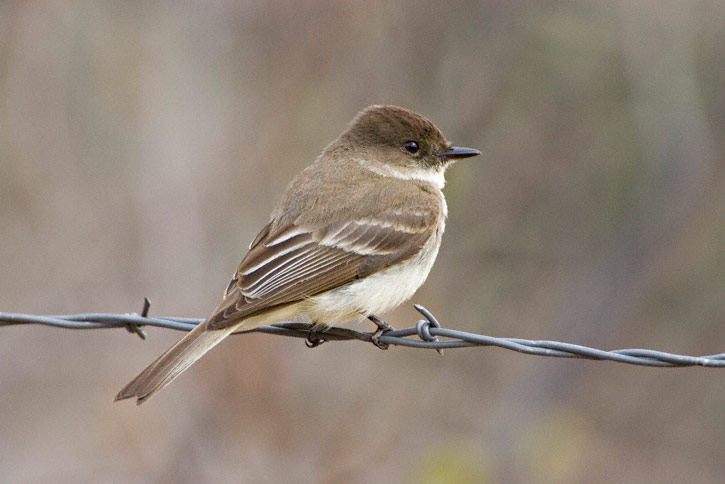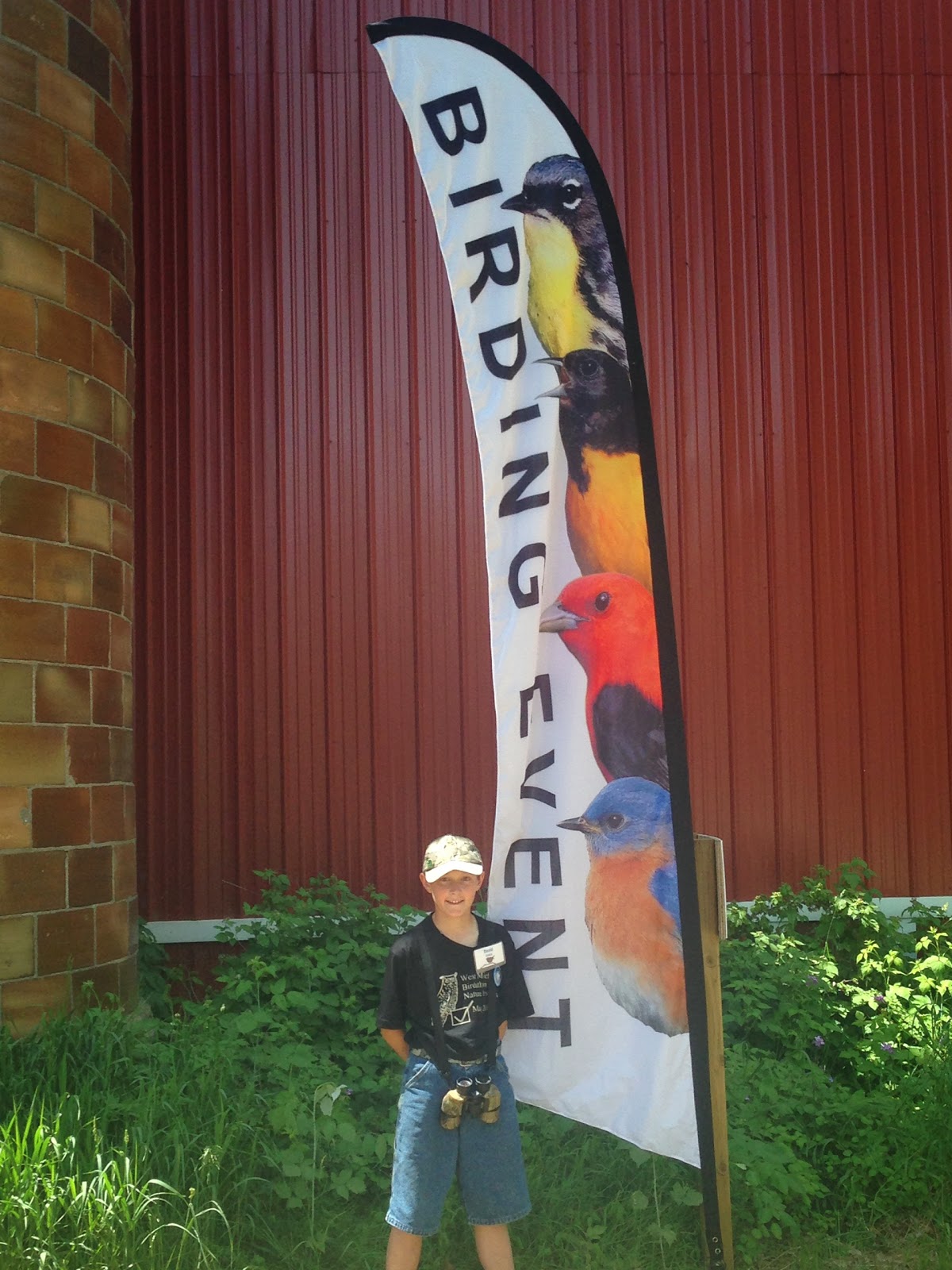Our second program for the month of June took place on Saturday, June 21st, at GVSU's downtown campus in Grand Rapids. We invited local Peregrine expert Elaine Kampmueller to present on her work with the now-famous falcons and show us the nest boxes that are placed atop of the Kent County Courthouse building downtown. She did us one better, however! She not only gave an excellent presentation on the falcons that interested both adults AND kids, but later led the group up to Crescent Park where everyone had the chance to peer through a scope and observe the falcons showing off their aerial acrobatics. It's as if the falcons sensed they were being watched by some of their biggest fans; they were so active! On top of that, the weather was clear and beautiful. What more could we have asked for? A big thanks for Elaine for teaching us about our feathered celebrities as well as for tipping the birds off that we were watching them ; )
 |
| Dr. Lombardo checking our female Bluebird for ectoparasites such as lice and mites. Those are the two most commonly found on birds such as Bluebirds and Tree Swallows. |
| Little Caleb getting a look at the Peregrine Falcons at Crescent Park! |
| Dr. Lombardo performing a beak measurement on a female Bluebird as club members watch intently. |
 |
| Jenna watching anxiously as GVSU undergraduate assistants prepare to extract a female Tree Swallow to band. |
| Falcon watching atop the city! |
| Watching on their own - our kiddos getting some looks for themselves! |

